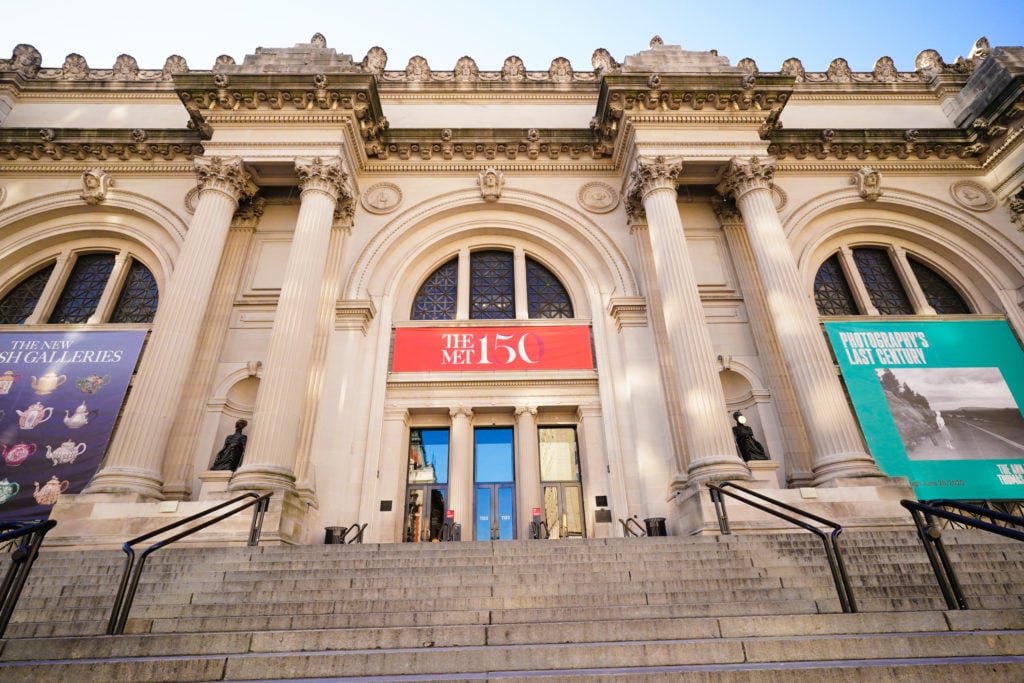Art World
Dozens More Layoffs Hit the Metropolitan Museum of Art, Which Has Shed 20 Percent of Its Staff Since March
Nearly 80 workers have lost their jobs, with 93 taking early retirement.

Nearly 80 workers have lost their jobs, with 93 taking early retirement.

Sarah Cascone

Citing a $150 million deficit, New York’s struggling Metropolitan Museum of Art has laid off 79 employees and furloughed an additional 181 workers, with 93 staff members taking early retirement offers.
“We have sought to delay these actions as long as possible to support our staff in the face of significant economic distress and medical concern in the spring when the pandemic first struck,” Met director Max Hollein and president and CEO Daniel H. Weiss wrote in an email to employees. “Unfortunately, with staff salaries comprising around 65 percent of our annual budget, we are confronted by the difficult reality that reducing the size of our workforce and furloughing additional staff is the responsible next step to address our urgent financial challenges.”
Staff whose positions have been eliminated will remain on payroll through August 29, with benefits in effect through August 31. The furloughs begin at the end of the month.
“The museum must adjust to the reduced revenue expected from a smaller number of visitors affecting admissions, retail, and restaurants,” Weiss and Hollein wrote.

Max Hollein, director of the Met, and Met CEO Daniel Weiss. Images courtesy of the Metropolitan Museum of Art.
This is the museum’s second round of layoffs since the coronavirus pandemic inaugurated widespread economic difficulties, with 81 employees previously losing their jobs in April.
At the time, the museum introduced a voluntary retirement program for non-union employees aged 60 or older who had been on staff at least 15 years, and warned that additional staffing cuts were likely on the way. The museum was among the first in the nation to shut its doors in March.
After negotiations with the museum’s union, Local 1503, the Met introduced a second voluntary retirement program for employees who are eligible for fully vested unreduced pensions as of December 30. A total of 44 union members opted to participate in the offer, in addition to the 49 non-union members who accepted voluntary retirement in July.
All together, the cutbacks, including voluntary retirements, mean that around 20 percent of the museum’s pre-closure staff have now lost their jobs, reducing the workforce to about 1,600 from about 2,000. Of the staff members whose positions were eliminated, 48 percent are people of color, who represent 43 percent of the total museum workforce, according to the New York Times.
Met staffers set to go on furlough should be back to work within six months, according to Weiss and Hollein. That staff includes 45 non-union workers and 136 union members.

The Metropolitan Museum of Art. Photo by Arad, Wikimedia Commons.
Other cost-saving measures have included freezes on hiring and discretionary spending and pay reductions of 20 percent for Hollein and Weiss, as well as 10 percent salary cuts for 11 other museum officers. The museum also turned to its $3.6 billion endowment, working within defined parameters to help cover costs.
City art museums and other indoor cultural spaces were initially part of the planned stage four of New York state’s reopening, which began July 20. Just days ahead of time, Governor Andrew Cuomo opted to change those reopening guidelines to exclude museums. No date for their potential reopening is currently set.
The Met, which is aiming toward an August 29 reopening, pending government approval, will limit its operating hours to five days a week down from seven. Job cuts were made across the board, but were deepest in retail, visitor services, and security.
“It is undeniable that the museum that we return to—whenever that may be—will be very different than the one we left in March,” Weiss told Artnet News in an email.